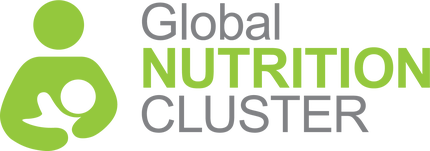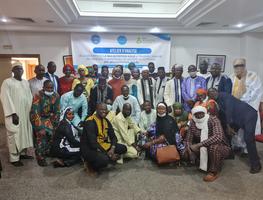Request support on coordination, information management, integration for nutrition outcomes or technical nutrition in emergencies assistance.
التماس الدعم لتنسيق التغذية وإدارة المعلومات والتغذية في حالات الطوارئ
Demander un appui pour la coordination de la nutrition, la gestion de l'information et la nutrition dans les situations d'urgence
Buscar apoyo para la coordinación de la nutrición, la gestión de la información y la nutrición en situaciones de emergencia
Solicite apoio para coordenação em nutrição, gestão de informação e nutrição em emergências
Mali
L2Coordination mechanism: Cluster
NCC: UNICEF P3, FT
Deputy: ACF
IMO: UNICEF NOB, TA
Coordination arrangement:
UNICEF Lead, MoPHP Co-lead and ACF Co-facilitator
Subnational level:
4 sub-national hubs in Gao (covering Kidal), Timbuktu (covering Taoudenit), Mopti (covering Segou, Bandiagara et Douentza) and Menaka.
2023 End-year report
January to December 2023
The results of the national SMART (Standardized Monitoring and Assessment of Relief and Transitions) survey conducted in June and July 2022 in Mali and published in September by the National Institute of Statistics, showed an alert situation with a Global Acute Malnutrition (GAM) of 10.8% and a Severe Acute Malnutrition (SAM) of 2.1%. The results of the Integrated Phase Classification (IPC) analysis also showed a similar situation with more than 20 circles on alert. The overall acute malnutrition situation has increased slightly this year compared to the previous one, with the Gao region reporting critical levels of acute malnutrition (above 15%), while a total of 6 regions, namely Kayes, Ségou, Mopti, Timbuktu, Taoudeni and Menaka, reported "alert" levels of acute malnutrition (weight-for-height GAM score of 10-14%).
In 2023, It is projected that nearly 1.5 million children under the age of five are expected to suffer from acute malnutrition (IPC AMN September 2022). This figure includes 367,000 cases of Severe Acute Malnutrition (SAM) - an increase of 16% compared to last year’s estimate. The nutritional situation has deteriorated in 2022 and humanitarian access to basic services has decreased especially in northern and central regions particularly in Assongo, Anderambukane, Inekar, Kidal, Bankas, and Koro where approximately twenty health facilities were closed or offer minimum services due to security concerns.
Scaling-up services for Management of Acute Malnutrition (CMAM) by using multiple approaches adapted to emergency and security challenges.
Building capacities of health workers and community health workers on the implementation of early detection and treatment of SAM and MAM, and other nutrition specific interventions at both health facility and community levels.
Promoting health and nutrition positive behaviour at community level, including counselling on Infant and Young Child Feeding practices with the use of standardized IEC tools on key family practices.
Strengthening micronutrients supplementation strategies for Vitamin A (VAS), iron/folic acid, iodized salt, deworming.
Enhancing coordination and nutrition monitoring in hot spots areas to better inform programming and deploy rapid response.
- The limited available funding for nutrition interventions is severely compromising the effective scale-up of activities in hard-to reach areas.
- Without safe, sustained and unimpeded humanitarian access to the areas of high nutrition and food insecurity, these areas will slip into a catastrophe.
| Advocacy Survey | |
| Country Advocacy Strategy developed | No |
| Link to document | |
| Advocacy activities included in annual work plan | Yes |
| Specific WG leading advocacy work established | Yes |
| Preparedness | |
| Contingency plan or ERP plan developed/updated | No |
| Link to document | |
| Intersectoral Collaboration (ISC) | |
| Intersectoral projects currently under implementation | Yes |
| Clusters engaged | |
| Food Security, Protection, Education, WASH and Health | |
Key Figures
(million)Funding
(million)- Children 6-59 months
- Pregnant and Lactating Women
Total partners (48)
Key Resources
list of important documents



